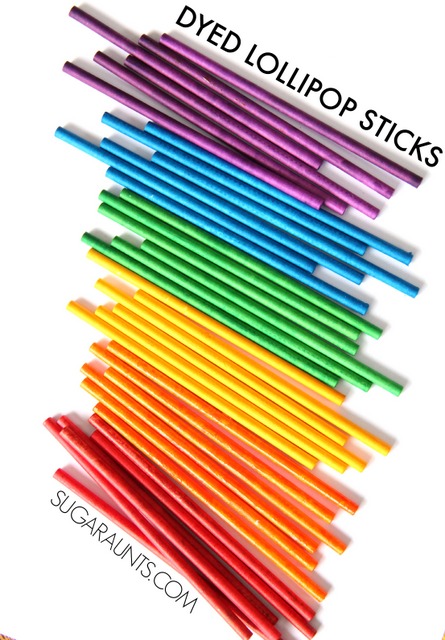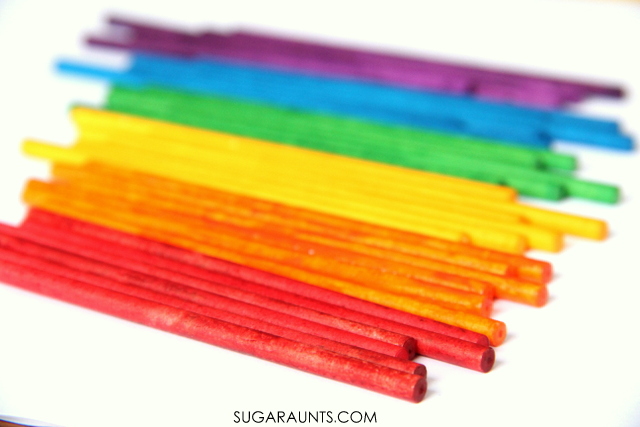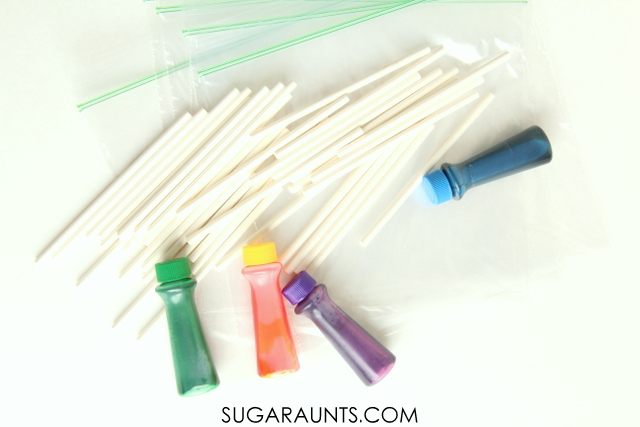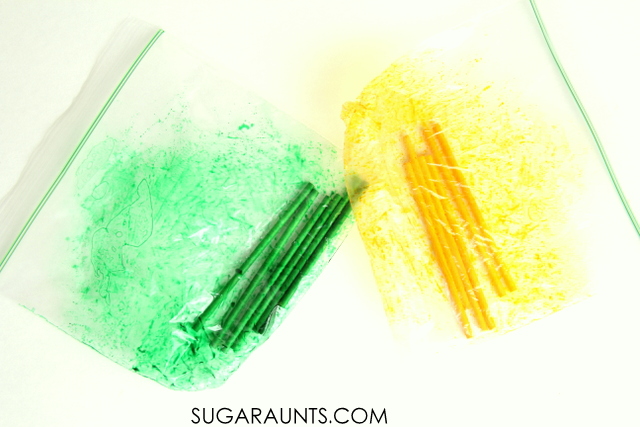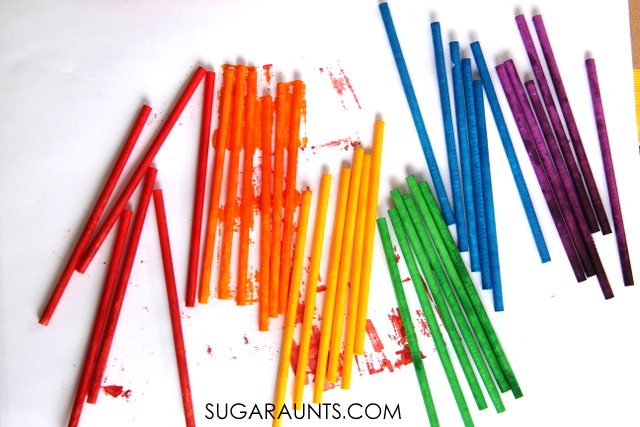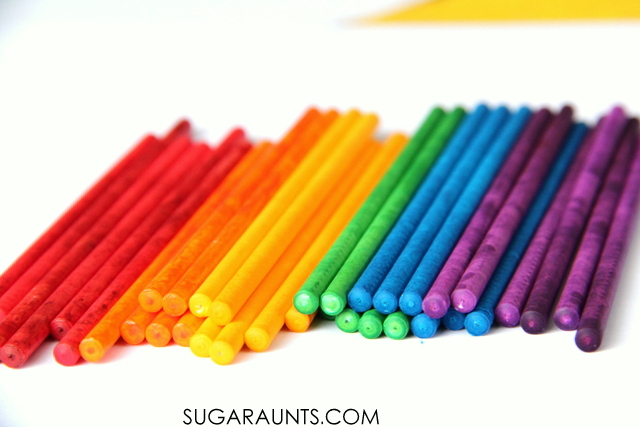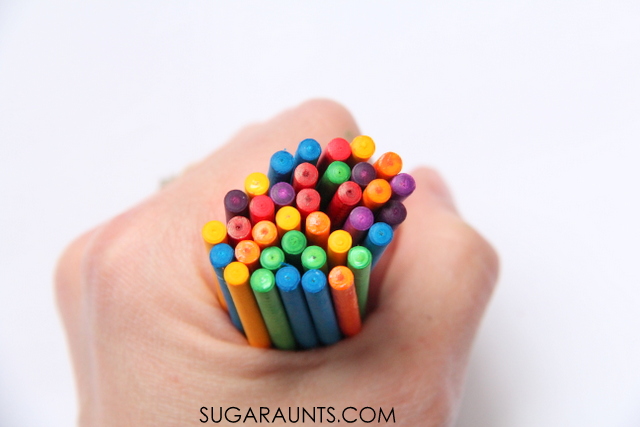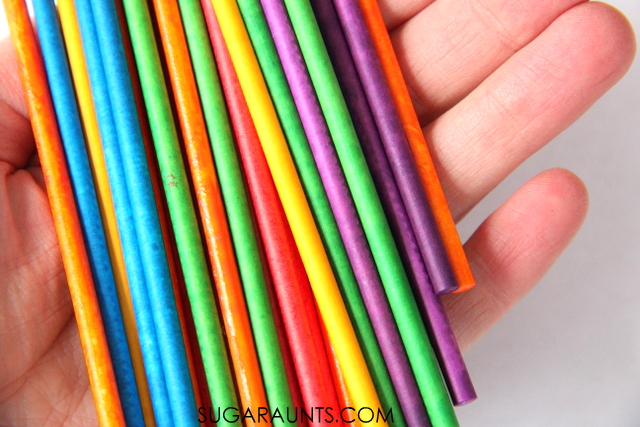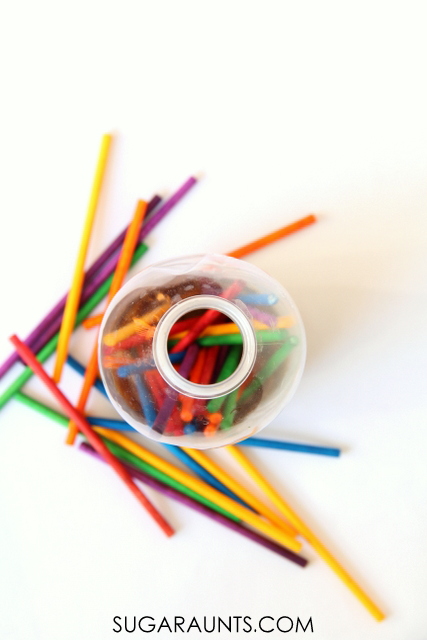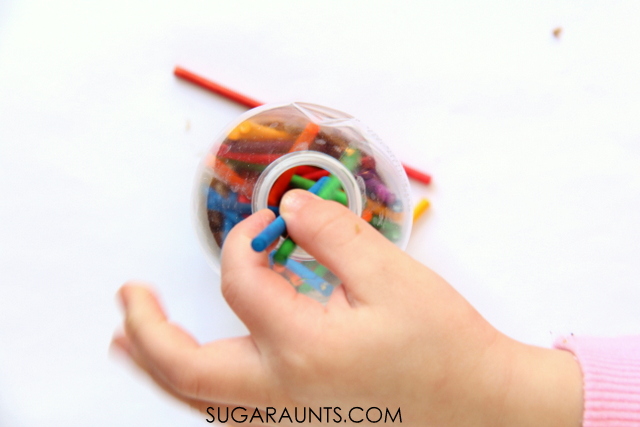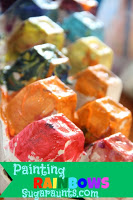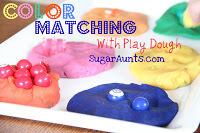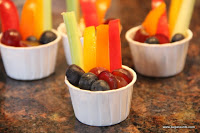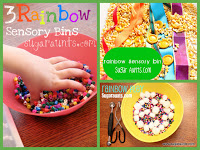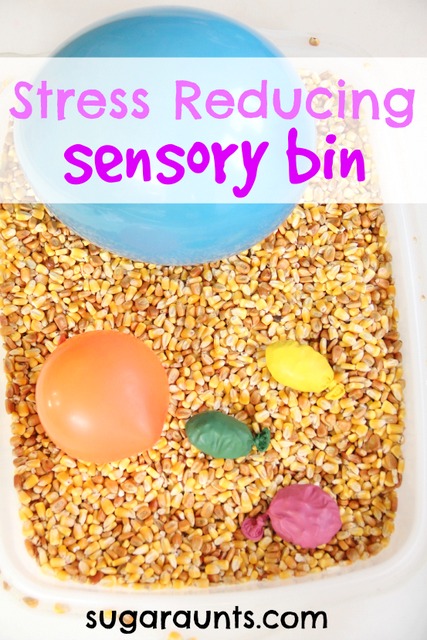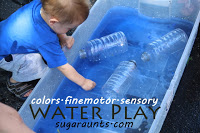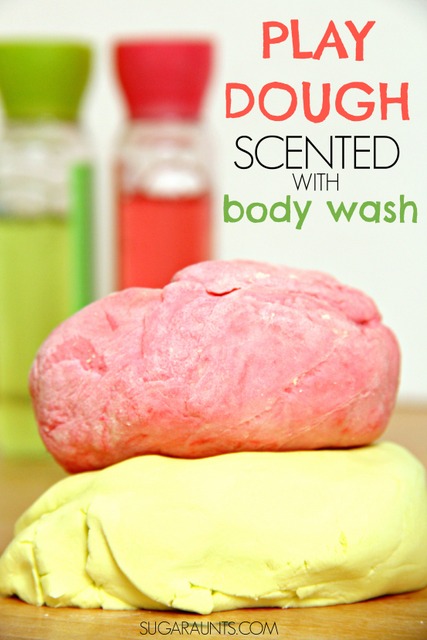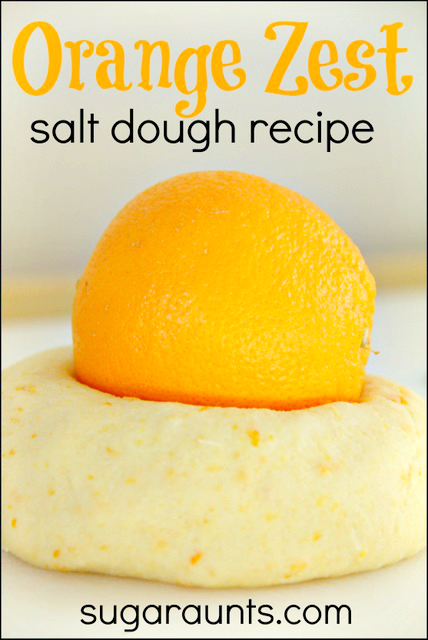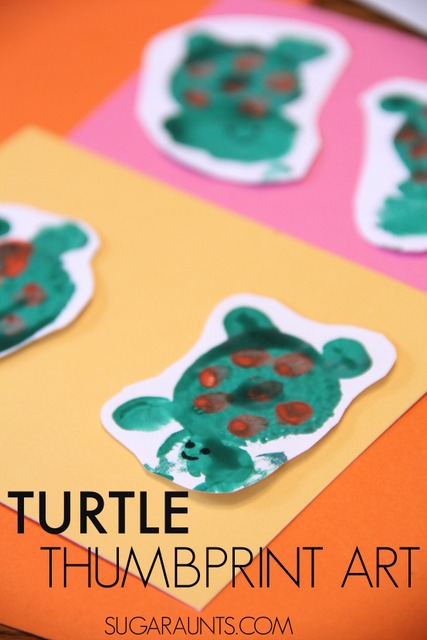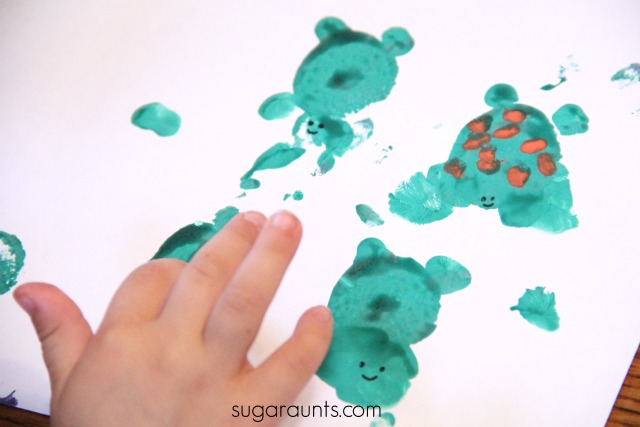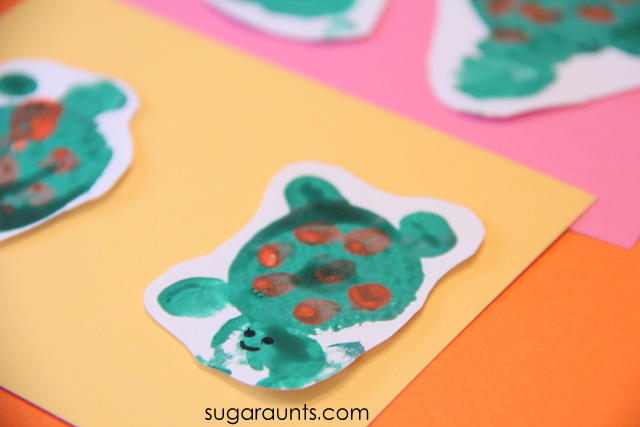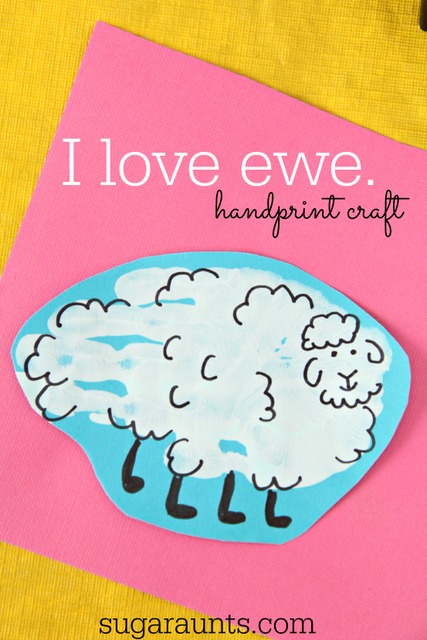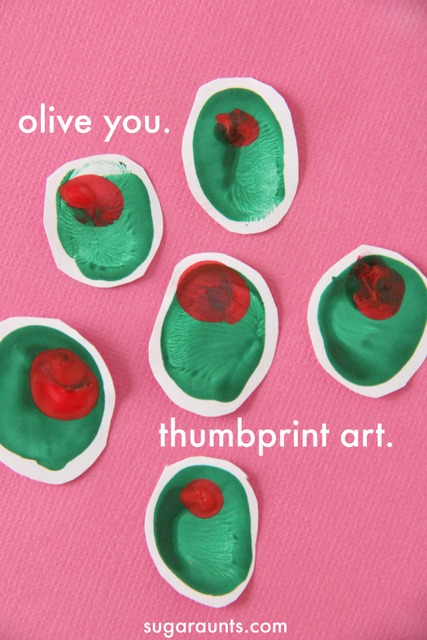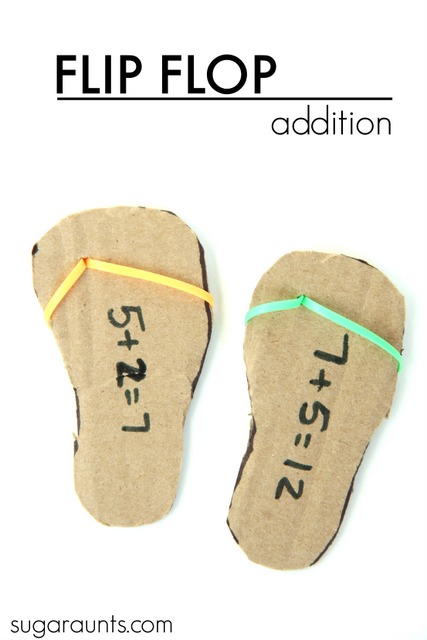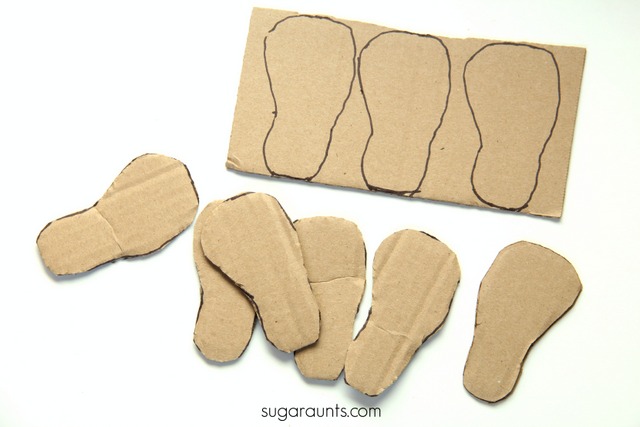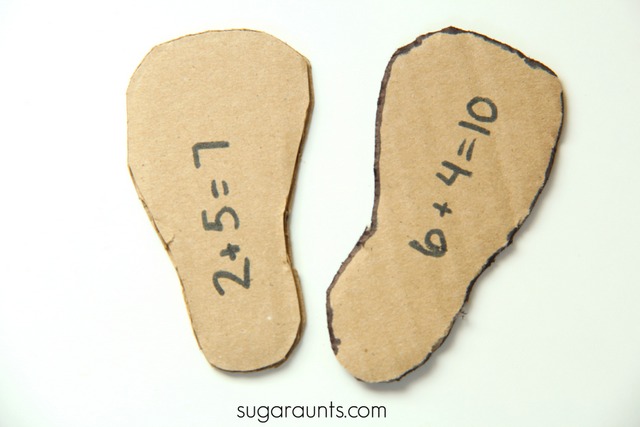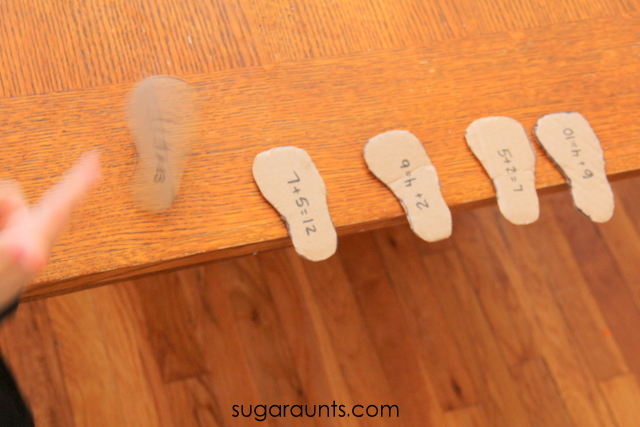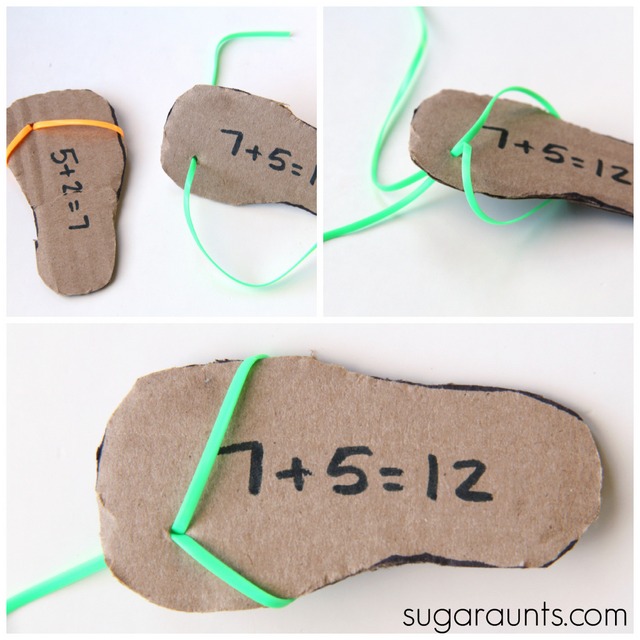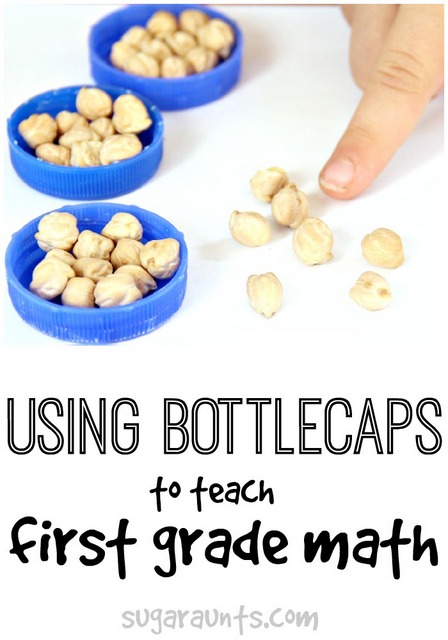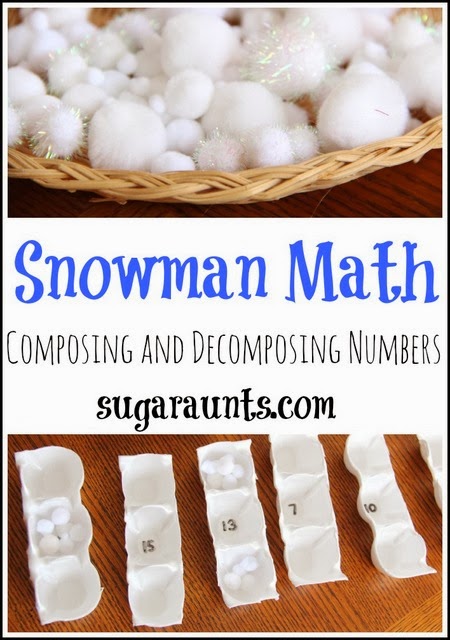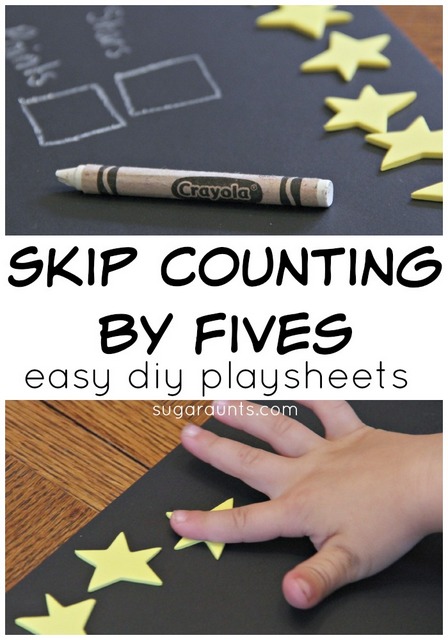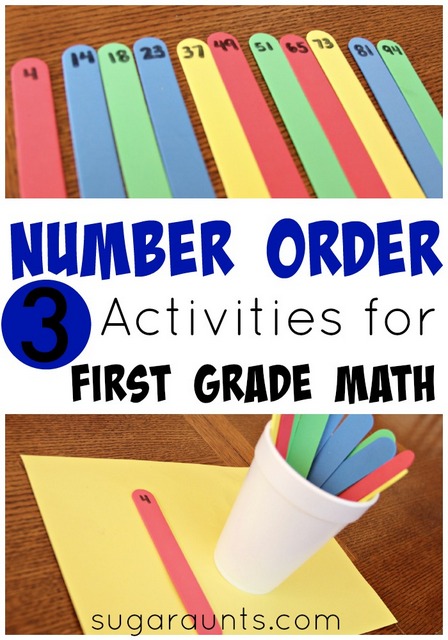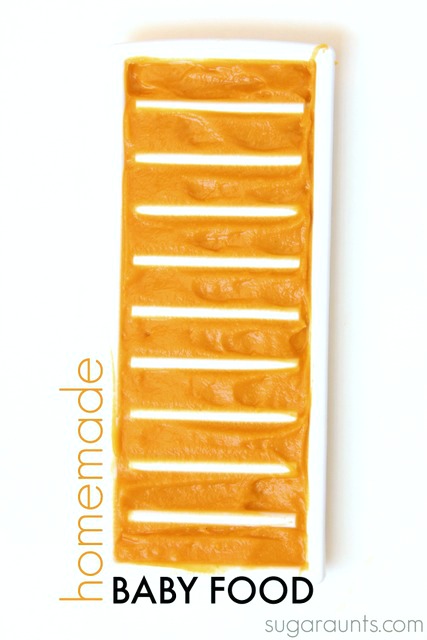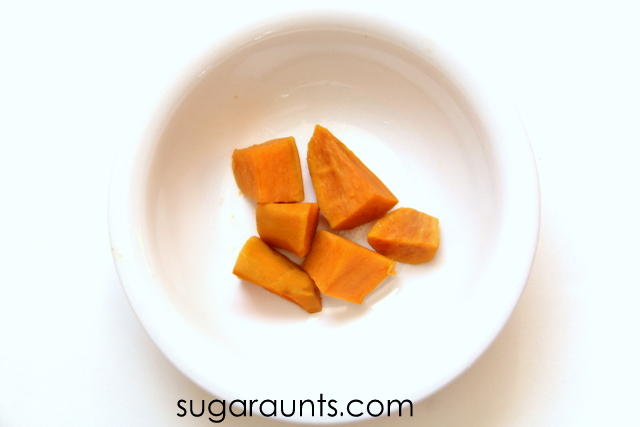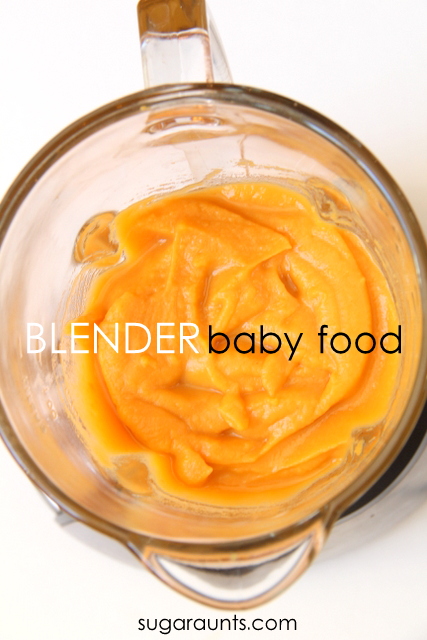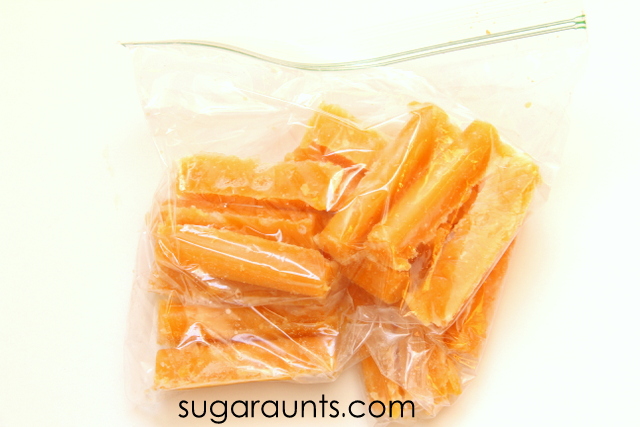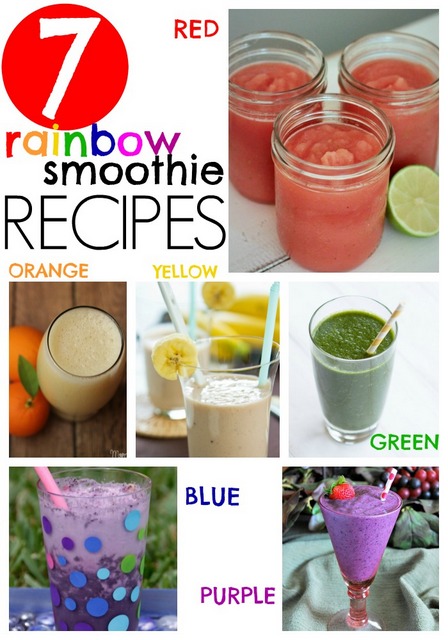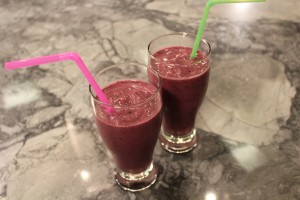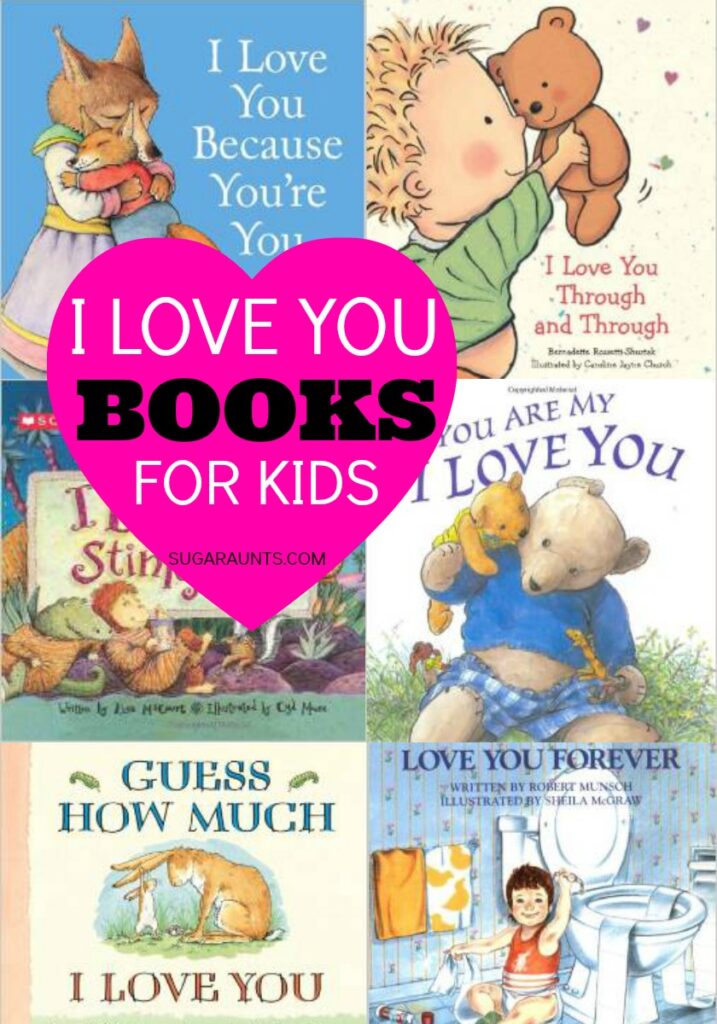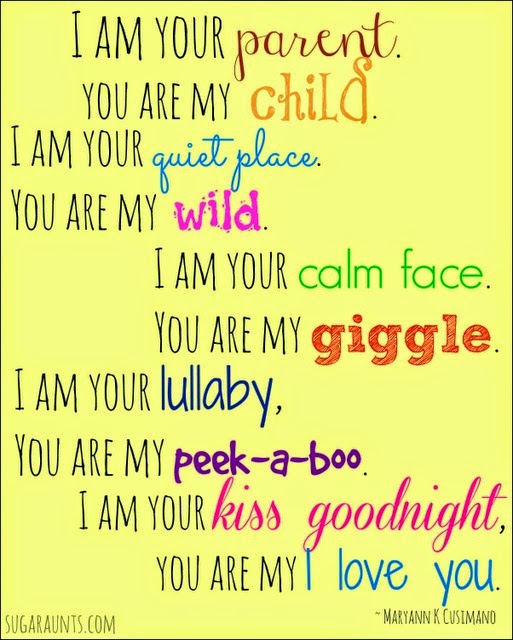Caterpillar Grapes Snack
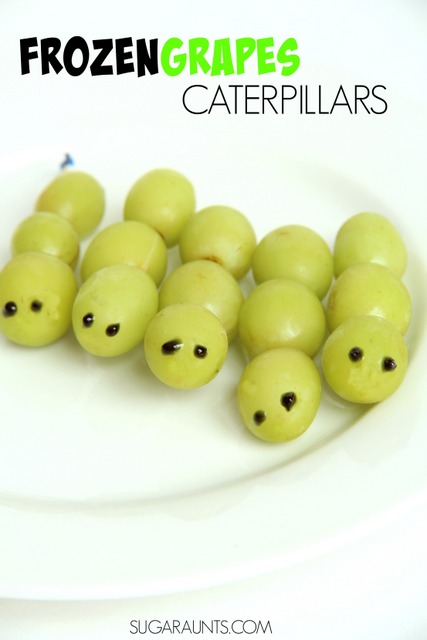
Cooking with Kids : Frozen Grapes Caterpillars

Little Sister helped with this cooking with kids snack. I pulled out a few toothpicks and green grapes. We threaded three grapes onto each toothpick. Little Sister really had fun with this activity…and what a great fine motor activity it is to thread grapes.

We popped the grapes into the freezer for a few hours until we were ready for a healthy snack. I used
black gel icing to make quick eyes on the caterpillars and snack time was ready.



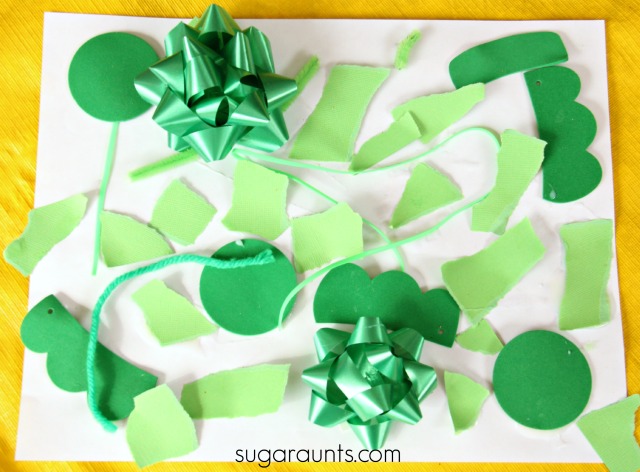
To go along with our green snack, we made a Green Collage Art project. Go on a color scavenger hunt around your house to gather green strings, ribbons, and scraps. Happy playing and crafting with green!
Encourage healthy eating in your kids by eating through the colors of the rainbow. Let us know if you make these caterpillars! We would love to see pictures and hear about it!
This post is part of an Eating through the Rainbow series with a few other kid activity bloggers. Check out the links below for more snack ideas to eat through the rainbow! Each blogger chose a color and came up with a healthy snack and a craft or activity to go along with that color. How fun! Get ready to play and eat your way through the rainbow!


